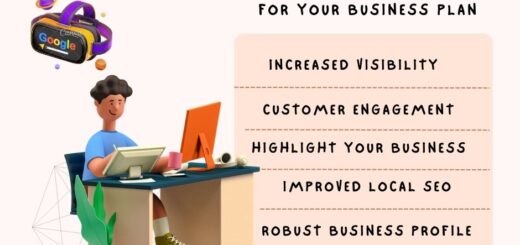How We Build Websites in 2025: A Look Inside iDevelopers’ Modern Workflow
At iDevelopers, we’ve seen web development evolve rapidly over the last decade—from static HTML pages to full-scale web ecosystems that can automate business workflows, personalize content in real time, and integrate AI-powered tools out of the box.
Now, in 2025, the way we design and develop websites reflects the demands of a digital world that never stops changing. This post is a behind-the-scenes look at how we work today—and how the future of web development is already here.
It All Starts with Listening
Before diving into tech stacks or wireframes, we sit down and listen—really listen. Whether it’s a startup founder with a bold idea or an enterprise team looking to modernize, we ask questions like:
- What problems are you solving?
- Who are your users?
- What does “success” look like?
- What internal systems does it need to connect with?
The answers help us define the project scope and architecture. Whether we’re building a booking engine for a global travel brand or an e-learning platform for a startup, clarity comes first.
Strategy Comes Before Software
Once we’ve mapped out the vision, we build a strategy. Think of it as a blueprint—except instead of bricks, we’re working with systems, data, and user flows.
This step includes:
- User experience (UX) planning
- Feature prioritization
- Scalability forecasting
- Tech stack selection based on real needs (Not just what’s trending)
Whether it’s React, Next.js, Python, or serverless functions, our tech decisions are intentional, not trendy.
Human-Centered Design, Powered by Data
Designing a website in 2025 means finding the sweet spot between creativity and data.
At iDevelopers, our UX/UI designers start by studying user behavior—not just guesswork. We analyze heatmaps, run surveys, review competitor benchmarks, and often bring in AI-generated personas to simulate user interactions.
Then, we design using:
- Component-based systems (think Figma + code-ready libraries)
- Dark mode & accessibility support by default
- Responsive-first thinking—but now adapted to foldables, VR browsers, and voice UI
Design isn’t just about how it looks anymore—it’s about how it feels to navigate.
Tech Stack Tailored to the Problem
By 2025, there’s no “one-size-fits-all” stack. The technology we use depends entirely on what the site needs to do.
Our common choices include:
- Frontend: Next.js, Vue 4, or Astro for lightning-fast rendering
- Backend: Node.js with GraphQL, Laravel, or Go for heavy-duty APIs
- CMS: Headless CMS options like Sanity, Strapi, or Contentful
- AI integrations: OpenAI APIs, Hugging Face models, and LangChain for intelligent features
- DevOps: Vercel, Netlify, or Dockerized AWS environments with serverless functions
What’s changed in 2025? AI now plays a much bigger role in our development environments. We use smart code assistants, auto-refactor tools, and predictive debugging to speed up dev cycles.
Development: Modular, Scalable, Future-Proof
Here’s where our dev team steps in and makes the design work.
We don’t believe in monolithic builds. Instead, we create websites with:
- Component-based architecture
- API-first development
- Real-time capabilities with WebSockets or GraphQL subscriptions
- AI integrations for things like content recommendations or chatbot support
Whether we’re building a membership portal, an e-commerce engine, or an admin dashboard, our focus is always on maintainability and performance.
And yes, we test the heck out of everything.
Performance, SEO, and Core Web Vitals
Gone are the days when websites could ignore performance. In 2025, page speed, accessibility, and user experience are make-or-break factors.
We build for:
- Instant load times using edge caching and static rendering
- SEO automation that adapts to changing algorithms
- Accessibility (WCAG 2.2+) baked into every component
- Green hosting solutions to reduce carbon footprint
Security and Speed: Non-Negotiables
A beautiful website that’s slow or insecure won’t last long.
We build for performance from the start:
- Lazy loading, CDN distribution, and smart caching
- Core Web Vitals optimization (because SEO still matters)
- End-to-end encryption, multi-factor auth, and regular audits
Cyber threats evolve, and so do we. Security is baked into every layer—not bolted on later.
Launch Isn’t the End
After the website goes live, we don’t just walk away. We offer:
- Real-time monitoring and analytics
- Ongoing optimization
- Iterative feature rollouts
- Training sessions for client teams
And maybe most importantly—we’re available. We believe in long-term partnerships, not one-and-done projects.
We set up:
- Real-time error tracking with tools like Sentry and LogRocket
- A/B testing frameworks to iterate on design choices
- Growth dashboards with analytics connected to Google, Meta, LinkedIn, and more
- Automated backups and uptime monitoring via StatusCake and Cloudflare
Plus, our retainer clients get ongoing optimizations, bug fixes, and new features as the business evolves.
In 2025, the digital space is crowded—but we believe thoughtful design, strong architecture, and smart functionality can still set a brand apart. That’s what we bring to the table.
If you have a vision for your next digital product or platform—we’d love to help you build it.
Let’s build something meaningful. Together. Visit our website or contact us with your requirements for customized websites. We are here to make your business better.
Contact iDevelopers via WhatsApp or phone at 93300-90037 or email us at info@idevelopersindia.com


